Construction of the Creek Turnpike around Tulsa, Oklahoma between March 1999 and August 2002 included a realignment of Interstate 44 from Skelly Drive to the Will Rogers Turnpike.1 The new roadway bypassed the section of I-44 angling northeast from Skelly Drive to the split with Oklahoma 66, and the transition to the Will Rogers Turnpike. It was considered to be one of the most dangerous stretches of road in the Tulsa area at the time,2 with a weaving traffic pattern adding motorists from the 193rd East Avenue on-ramp just ahead of the eastbound I-44 split with U.S. 412 and the adjacent left-hand ramp to Oklahoma 66 into Catoosa.
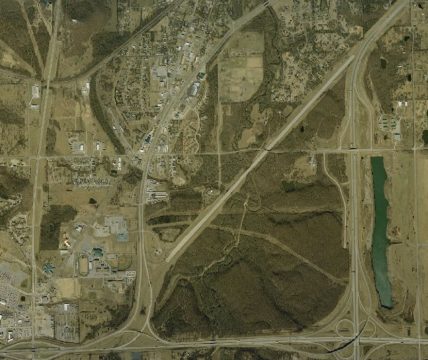
I-44 now travels north on the Creek Turnpike from U.S. 412 to the Will Rogers Turnpike west of 225th East Avenue. The old roadway was left in place both north and south of Pine Street.
Interstate 44 was extended east along U.S. 412 to the new Creek Turnpike in July 2002.3 It turned north from U.S. 412 to join the realigned west end of the Will Rogers Turnpike. The former alignment was subsequently abandoned beyond the split with Oklahoma 66 while the old ramp system for Historic U.S. 66 was retained as the local exit from I-44 to Catoosa.
Unless otherwise noted, all photos below taken November 2, 2016.
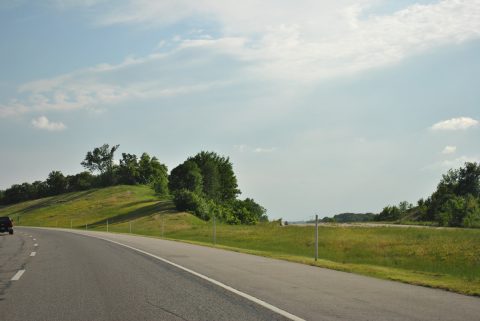
Interstate 44 veers south from the original Will Rogers Turnpike alignment to join the Creek Turnpike ahead of the Pine Street off-ramp (Exit 35). Photo taken 05/04/12.
- "Turnpike final leg to open." Tulsa World (OK), August 13, 2002.
- "Creek 'pike no cure-all for Tulsa traffic woes." Tulsa World (OK), January 21, 2003.
- "Pike-bound lanes revised." Tulsa World (OK), July 11, 2002.

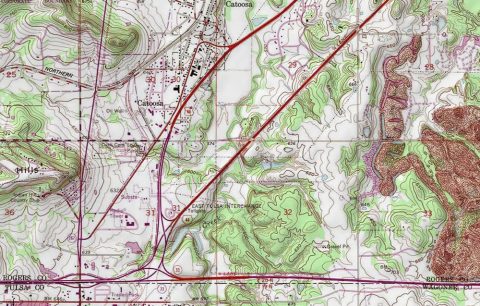

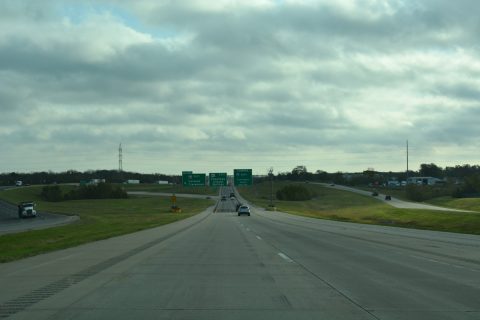
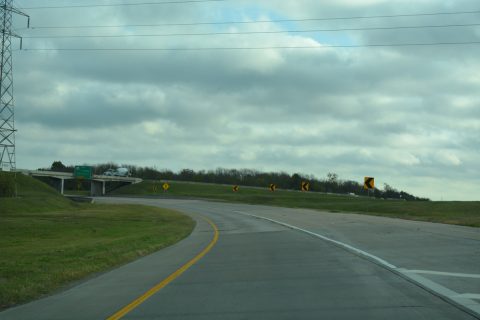

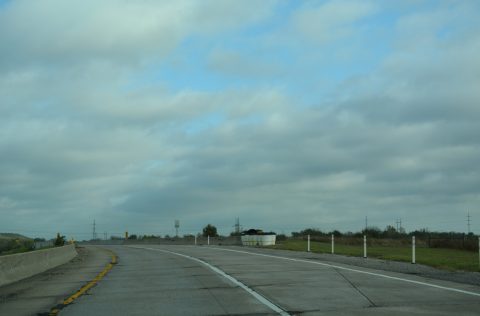
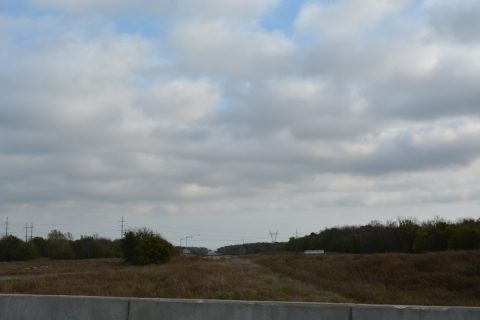
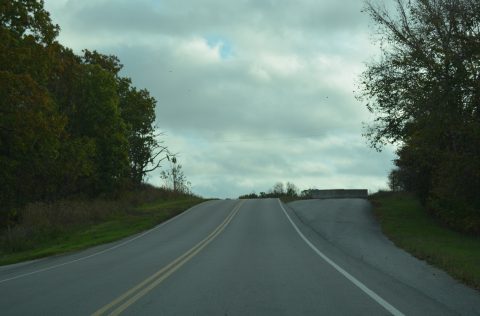
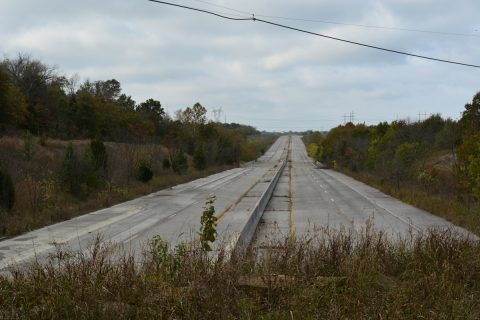
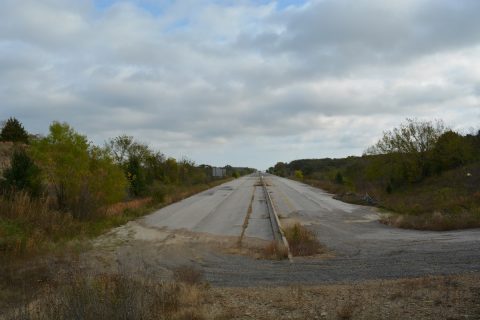
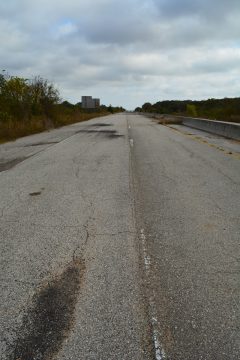
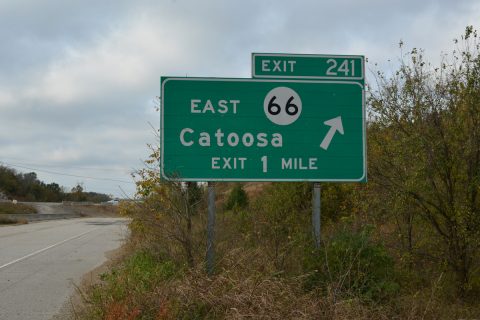
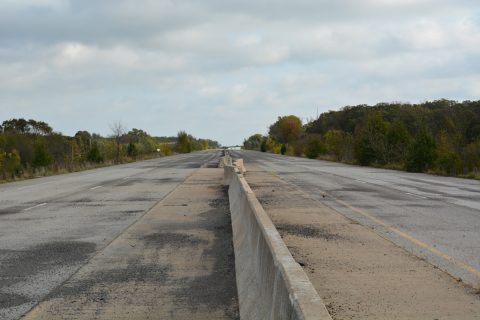
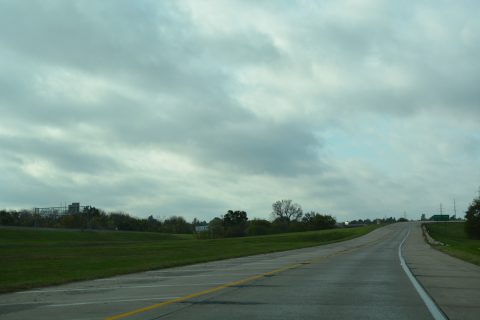
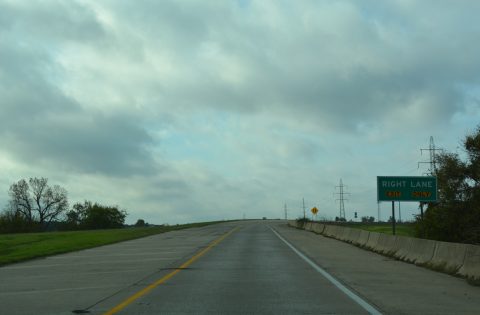
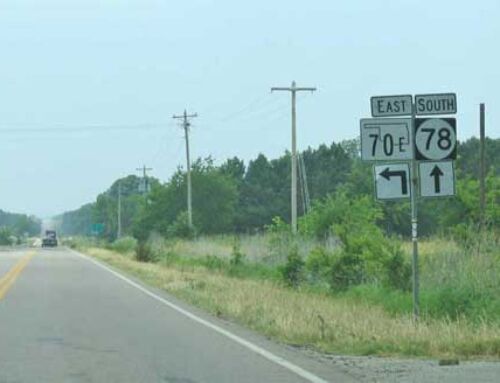
I’m amazed at the amount of highway information you have on this site. I’m an over-the-road truck driver and I see hundreds of miles of highway every day.
It seems that it would be a full-time job to maintain this huge volume of highway data.
Do you make your living working for the Department of Transportation?
RIP Fart Smock Bridge. You will be missed.
Can this be purchased?